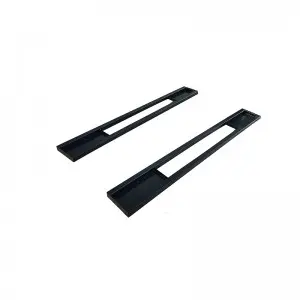Cylinders have been an integral part of engineering for centuries, playing a crucial role in various industries and applications. From engines and machinery to hydraulic systems and pneumatic devices, cylinders are widely utilized for their efficient power transfer and mechanical advantages. This article explores the mechanics behind cylinders, discusses their diverse applications, and highlights their significance in modern engineering.

Understanding the Mechanics and Applications of Cylinders in Engineering: A Comprehensive Overview
A cylinder can be defined as a three-dimensional geometric shape with two circular bases and a curved surface connecting them, resulting in a uniform shape throughout. The most common type of cylinder is a right circular cylinder, where the bases are perpendicular to its axis. However, cylinders can also take different forms, such as oblique, elliptical, or irregular shapes, depending on the specific application.
Cylinders operate on the principles of pressure and volumetric displacement. In hydraulic and pneumatic systems, cylinders are used to convert fluid or gas pressure into linear motion. This concept is based on Pascal’s law, which states that an applied pressure on a fluid in a closed system is transmitted equally in all directions. By confining the fluid or gas within the cylinder chamber, the pressure generated can be harnessed to produce a desired mechanical output.

Understanding the Mechanics and Applications of Cylinders in Engineering: A Comprehensive Overview
Hydraulic cylinders are commonly found in heavy machinery, construction equipment, and automotive applications. They consist of a piston connected to a rod, with fluid pressure acting on the piston to extend or retract the rod. The controlled movement of the rod allows for precise operation and automation of various tasks, such as lifting, pushing, or pulling heavy loads.
Pneumatic cylinders, on the other hand, utilize compressed air to generate linear motion. Similar to hydraulic cylinders, they consist of a piston and a rod. When air is supplied to the cylinder, it fills the chamber behind the piston, creating pressure that pushes the piston forward. The rod connected to the piston is then extended, enabling the pneumatic cylinder to perform tasks like clamping, gripping, or actuating valves in industrial processes.
Apart from their role in power transmission, cylinders are also used for storage and containment purposes, as seen in gas cylinders commonly employed for storing compressed gases, such as oxygen, argon, or propane. These cylinders are designed with safety features, including pressure relief valves and sturdy construction, to ensure safe storage and transportation of hazardous or flammable gases.
Additionally, cylinders find extensive use in the energy sector, particularly in internal combustion engines. Combustion cylinders in engines, such as those found in automobiles, rely on the reciprocating motion of pistons to convert chemical energy from fuel combustion into mechanical work. This process drives the rotational motion of the engine’s crankshaft, generating power to propel vehicles and machinery.

Understanding the Mechanics and Applications of Cylinders in Engineering: A Comprehensive Overview
Furthermore, cylinders play a vital role in scientific research and experimentation. For instance, in laboratories, glass cylinders of various sizes serve as measuring instruments for liquids and gases. Their cylindrical shape allows for accurate volume measurement, making them essential tools in chemistry, biology, and other scientific disciplines.
In conclusion, cylinders mark an essential component in engineering, offering versatile applications across multiple industries. Their ability to convert pressure into linear or rotational motion has revolutionized the functioning of machinery, hydraulic systems, and engines. The continuous advancements in cylinder technology, such as the introduction of composite materials and intelligent control systems, further enhance their efficiency and performance in diverse industrial settings. As engineering evolves, the significance of cylinders remains unwavering, making them indispensable elements of modern technology.quickjack portable car lift
